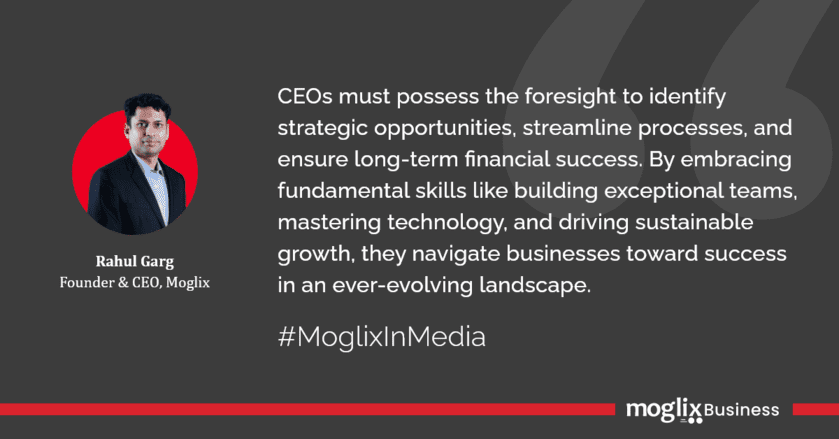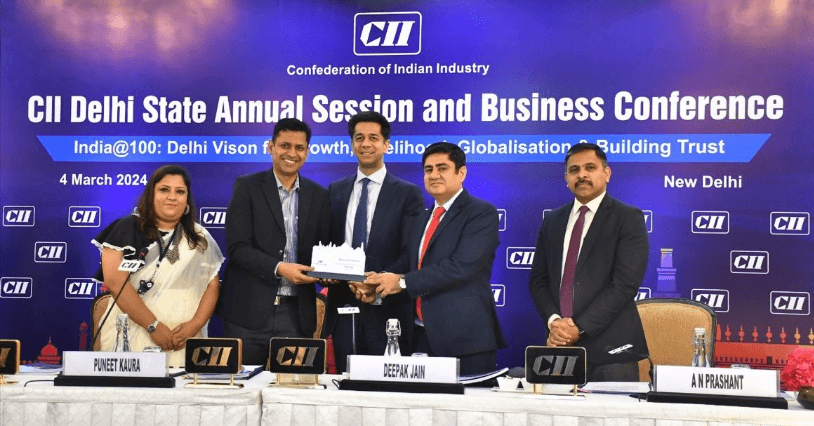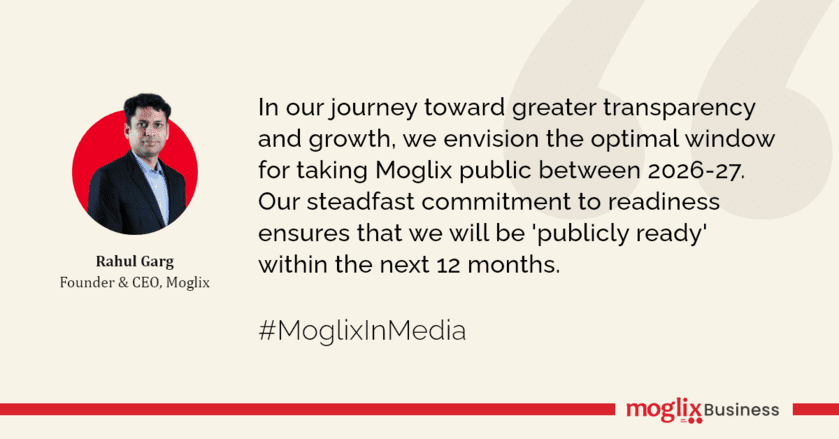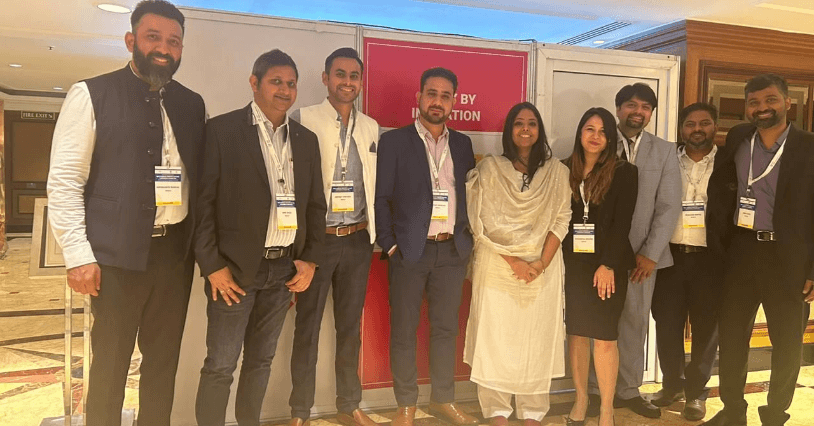Strategies for CPOs to Navigate Times of Inflation

Strategies for CPOs to Navigate Times of Inflation
Introduction
According to the J.P. Morgan research, inflation for 2024 will likely remain around 3% [1]. The economic winds are shifting, and inflation is on the rise. This presents a significant challenge for CPOs across all industries. They are facing procurement challenges with rising raw materials, transportation, and labor costs. However, amidst the turmoil lies opportunity. CPOs need strategic approaches to mitigate inflation and come out stronger for future challenges.
Understanding the Current Scenario
Before diving into strategies, it’s crucial to acknowledge the current scenario. Global events and supply chain disruptions due to the Panama Canal [2] and the Suez Canal [3] continue to fuel inflation. Geopolitical tensions across these crucial trade corridors force many companies to redraw decade-old trade maps. They are impacting MRO supplies and driving up procurement costs. This volatility makes accurate forecasting and cost management more critical than ever.
Building a Fortified Supply Chain
Optimizing eProcurement Process
Streamlining the eProcurement process helps in informed decision-making. For instance, a company can use EDI and procurement software powered by supply chain analytics to fetch real-time data for price trends, supplier performance, and contract terms. This transparency can help the company to identify cost-saving opportunities and negotiate more effectively.
Diversifying Your Vendor Base
As per the Deloitte report, organizations with regional supplier diversification are less likely to be impacted by disruptions. Reliance on a single supplier can induce a price monopoly. Instead, having a wide vendor network with regional diversification will foster competition and reduce costs. For instance, GM has announced a deal with Livent and LG Chem to buy lithium and cathode to mitigate the risk of building 1 million EV cars by 2025 [4].
Mastering Inventory Management
Excess inventory ties up capital and increases vulnerability to price fluctuations. Implement lean inventory management practices like Just-in-Time (JIT) delivery and Kanban systems. For instance, big brands like Walmart and Target optimize inventory levels for specific items as per demand forecasting to minimize holding costs and ensure a steady cash flow throughout the year.
Collaborating with Suppliers
Nearly 56% [5] of procurement teams use technology to foster strong, collaborative relationships with their suppliers. However, as per the PwC’s survey [6], more than technology, it’s about the company’s ability to adapt and change with the situation. Consider collaborative planning, forecasting, and replenishment (CPFR) to optimize your and your supplier’s operations.
Optimizing MRO Supply
According to DXP head, digitization is the key to successful supply chain management. It starts with data and is enhanced with procurement analytics. For instance, this method of MRO optimization in the cotton industry can help the company quickly identify supply chain bottlenecks to minimize procurement error, minimize waste, and improve cotton production rate across the board. Learn more about how Moglix helped an EPC firm bring agility to the supply chain in this detailed case study.
Bottom Line
By diligently implementing these strategies, CPOs can transform challenges into opportunities. Once you learn how to hold steady in an inflation storm, you can easily safeguard your organization’s bottom line and build a more resilient and adaptable supply chain for the future.
Looking for a robust eprocurement model to beat inflation?
Partner with Moglix Solutions! Visit our website to learn more.
References:
- https://www.jpmorgan.com/insights/global-research/economy/global-inflation-forecast
- https://www.wsj.com/business/logistics/panama-canal-to-halve-daily-sailings-this-winter-due-to-drought-3bd70c79
- https://www.wsj.com/business/logistics/thats-two-for-two-the-worlds-other-big-canal-is-in-trouble-f9760523
- https://energy.economictimes.indiatimes.com/news/power/gm-signs-agreements-with-suppliers-on-course-to-reach-1-million-ev-capacity-by-2025/93136038
- https://www.kodiakhub.com/blog/top-10-stats-supplier-relationship-management-software-market
- https://www.pwc.com/gx/en/services/consulting/digital-operations/digital-procurement-survey.html
Role of Occupational Safety Practices in Protecting Tunnel Workers

Role of Occupational Safety Practices in Protecting Tunnel Workers
Introduction
The harrowing incident at the Silkyara tunnel in Uttarkashi [1], where 41 laborers were trapped for 17 days, tragically highlights the vital role of safety equipment and industrial safety equipment in protecting these brave individuals. But it goes beyond just physical protection; proper safety rules in the industry are crucial for tunnel workers’ mental and emotional well-being as well.
Aftermath of the Incidence
Following the Silkyara incident, where rescuers heroically saved 26 workers, a strange reality appeared. More than half the rescued laborers refused to return to the project. The trauma of the experience left them deeply affected. This indicates the profound impact of safety mishaps on workers’ lives. This incident underscores that prioritizing safety rules in the industry is not just about compliance; it’s about protecting lives and creating a healthy work environment.
How Safety Equipment and Protocols Guard Lives
Though every project has a unique tunnel safety manual (e.g., Mumbai Coastal Road Project), the basic OHS&E guidelines are the same. Tunnel construction presents a unique set of hazards. Workers might face challenges from different elements and situations inside the tunnel. For instance, falling debris or unstable rock formations can pose a threat from the top. They might also be exposed to dust, fumes, noise, etc.
In this regard, they need appropriate safety equipment to create the first defense against these threats.
The list of some common safety equipment includes but is not limited to:
- Hard hats
- Goggles
- Respirators
- Sturdy boots,
Additionally, industrial safety equipment, like ventilation systems, ground support systems, and emergency communication devices, also help provide workers with an additional layer of safety.
Beyond physical protection, safety protocols are a roadmap for safe work practices. These protocols include:
- Regular inspections of the site are mandatory. For instance, workers need to equip themselves with proper safety helmets and gumboots if there is cramped working space or slippery flooring.
- All equipment needs to be kept in good condition.
- Create a proper workplace health and safety guide and encourage workers and other administrators to follow that at all costs. Look for inspiration in the workplace safety guide [2] of Schlumberger, the world’s biggest oilfield services company.
Conclusion – Investing in Safety Pays Off
Prioritizing the industry’s safety equipment, industrial safety equipment, and safety rules might seem like an additional cost, but the benefits far outweigh the expense. A robust workplace safety protocol ensures the safety of your workers and improves your brand reputation with reduced chances of accidents, project delays, and legal liabilities.
Looking to build a safe work environment that attracts and retains skilled workers to increase productivity and project success?
Partner with Moglix Solutions! Visit our website to learn more.
References:
Things to Consider While Choosing Safety Helmets

Things to Consider While Choosing Safety Helmets
Introduction
The safety officers and procurement of high-risk sectors must practice due diligence while choosing safety helmets for their staff.
According to research, staff at high-risk sites who wear an industrial safety helmet mitigate the likelihood of brain injury by 50% [1]. Also, OSHA’s recent decision [2] to replace traditional hard hats with improved safety helmets in the construction and oil and gas industries demonstrates a commitment to improving worker safety.
This blog outlines the features of safety helmets for best practices.
Helmet’s purpose and standards
Helmets vary from bump caps, designed for minor knocks, to high-performance industrial helmets for high-risk environments like mining. Lightweight helmets suit low-risk tasks where minimal head protection is needed, whereas standard and industrial helmets offer more substantial protection from potential impacts from falling objects. Climbing helmets, adapted for fall-risk tasks, ensure the helmet remains secured. Each helmet type aligns with specific standards,
- Bump Cap (EN 812): Minimal protection, suitable for low-impact environments like warehouses or maintenance work.
- Lightweight Safety Helmet (EN 397 Lightweight): For low-risk areas, head protection is needed against small, flying objects. Ideal for utility and highway maintenance.
- Standard Safety Helmet (EN 397 Standard): Common in construction and manufacturing, offering protection from falling objects.
- Industrial Safety Helmet (EN 397 Industrial): Heavier, robust helmets for high-risk areas with possible side impacts.
- Climbing Helmet (EN 12492): For work at heights with risks of falls, offering enhanced retention and side-impact protection.
- High-Performance Industrial Helmet (EN 14052): High protection for areas with falling debris, such as mining or construction sites.
- Anti-Static Helmet (EN13463-1): Designed for explosive environments to prevent static buildup.
- Motorcycle Helmet (B.S. 6658:1985): For road use by motorcyclists, featuring visors or goggles for eye protection.
The Impact Analysis
IA is the most important aspect. The solution is clear: TBIs account for a significant share of construction injuries—11–22% [3] generally and up to 61% for severe cases, as indicated by Swedish and German data. Adopting safety helmets that meet ANSI/ISEA impact standards, capable of withstanding impacts without transmitting more than 4,450 N to the wearer, becomes imperative. This approach, backed by comprehensive testing, addresses the high TBI rates from falls by ensuring helmets are specifically evaluated for their ability to protect against such injuries, enhancing worker safety.
The Design Features
Studies [4] comparing traditional hardhats with modern designs, including those with rotation-damping and climbing-style features, suggest that newer is sometimes better. Despite various impact tests, traditional hardhats sometimes outperform modern counterparts, particularly in scenarios mimicking falls and object impacts.
The key takeaway is to focus on the best quality helmets based on their specific impact performance data rather than assuming that newer designs offer enhanced protection.
Final Words
Every safety officer understands the importance of safety helmets, and the onus lies on their shoulders to choose the best for their workers. The considerations mentioned above are a few among many considerations. The next step is to connect with experts such as Moglix to learn more about further considerations and procurement approaches.
References:
- https://ohsonline.com/articles/2021/03/01/from-the-hard-hat-to-the-helmet.aspx
- https://www.osha.gov/news/newsreleases/trade/12112023#:~:text=On%20Nov.,protect%20workers’%20entire%20heads%20better.
- https://www.sciencedirect.com/science/article/pii/S0925753520305439#:~:text=TBI%20accounts%20for%2011%E2%80%9322,fall%20accidents%2C%20in%20both%20countries.
- https://www.sciencedirect.com/science/article/pii/S2405844022012506
How the `Perfect Storm` is Impacting Supply Chains Globally

How the `Perfect Storm` is Impacting Supply Chains Globally
Introduction
Imagine you order a new phone online, excited to get it next week. But wait! A pirate attack in the Red Sea delays the ship carrying your phone, then a drought shrinks the Panama Canal, adding more days to the journey. Sounds frustrating, right?
This chaotic scenario, nicknamed the “perfect storm,” is wreaking havoc on global supply chains. But there’s good part is that eprocurement can be a lifesaver!
Impact of Perfect Storm on Global Supply Chain
Red Sea Crisis and Panama Canal:
The recent Houthi attacks on ships in the Red Sea [1] which is the gateway to the Suez Canal. This incident has sent shockwaves through the industry. Major shipping lines are rerouting vessels around the Cape of Good Hope. This has been creating delays and causing significant costs to journeys. This, coupled with the never-before-seen drought impacting the Panama Canal [2], further squeezes capacity and raises concerns about missed delivery windows.
Ripple Effects:
Retailers are bracing for product delays and limited availability. For instance, IKEA [3] anticipates late deliveries with restricted items, while Abercrombie & Fitch resorts to costly air freight, mirroring their 2022 strategy during Vietnam lockdowns. These stopgap measures highlight the vulnerability within just-in-time supply chains.
Beyond Holiday Hurdles:
While the holiday season’s immediate pressure is off, the impact extends to spring and summer collections. Delays are expected, with UK retailer Next predicting a lag up to three weeks. Additionally, the Lunar New Year factory closures in China pose a risk if containers miss the window for shipment, potentially adding further delays.
A Perfect Storm, Not a Pandemic Nightmare:
Experts like Margaret Kidd [4] from the University of Houston offer a different view. Compared to pandemic lockdowns, factories remain operational, and consumer spending on discretionary items has moderated. However, the situation could escalate if the Houthi attacks persist.
Call for Eprocurement
In this “perfect storm,” the need for supply chain digital transformation becomes more evident than ever. In this regard, digital procurement solutions can enhance visibility and agility. For instance, businesses can get real-time info on where their stuff is, even with detours. As a result, they can respond faster to disruptions. Supply chain management software predicts potential delays like the Panama Canal issue and helps businesses adjust.
By adopting digitalization, companies can find new shipping paths if pirates are causing trouble. Businesses can also save costs with supplier consolidation and vendor-managed inventory solutions like Moglix did for an Automotive OEM to unlock 2% cost savings in indirect procurement through supplier consolidation.
Bottom Line
The “perfect storm” might be rough, but technology offers a life raft. By adopting digitalization, businesses can build resilient and adaptable supply chains, ensuring customers get products on time, even when pirates and droughts are causing chaos.
Looking for supply chain digital transformation or supply chain management software to strengthen your digital procurement.
Partner with Moglix Solutions! Visit our website to learn more.
References:
Real-Time Analytics: The Driving Force Behind Responsive Supply Chains

Real-Time Analytics: The Driving Force Behind Responsive Supply Chains
According to a PwC survey 2023, around 86% [1] of organizations agreed to use real-time supply chain digital transformation to deal with unexpected events or problems. In this regard, let’s understand how switching to digital procurement and using real-time procurement analytics can help companies easily manage cost, inventory, and more.
How Real-Time Analytics Benefits Your Supply Chain
Improves Operation Visibility
According to recent research, 77% [2] of industry leaders state that real-time visibility is a must to provide superior customer service. Real-time analytics data helps you understand how your supply chain runs throughout all stages and address lurking challenges in advance.
For instance, it shows on-time delivery rates for each distribution zone and improves your ability to respond quickly to bottlenecks before they become a major problem. Interestingly, an ideal supply chain management software can also pull data from machine sensors to display their technical status. That better prepares your maintenance team to carry out routine and emergency maintenance to ensure everything goes smoothly from the technical end.
Reduces Operational Cost
Did you know even a 5% [3] savings in supply chain costs can double your net profits? Real-time procurement tools offer detailed insights into your company spending and suggest improvement tips. For instance, a dashboard shows spending patterns, supplier performance, and contract terms. You can also use real-time data to negotiate better deals with suppliers per current market trends and competitor pricing.
For instance, if a product has seasonal price fluctuations, you can propose a good deal to the supplier during off seasons only if you can access its price history for the last year through analytics. Learn more about how Moglix helped an automotive OEM to unlock cost savings in indirect procurement through supplier consolidation.
Helps With Market Volatility
Volatility is an essential index of market risk. Imagine if you could stock materials in advance to beat upcoming shortages easily. Digital procurement with analytics tools can track and analyze the stock of raw materials in the market for the past few months and predict a stockout in the future.
This can save your company’s reputation if you receive an unexpected order during the stockout, only to feel safe that the production continues without interruption. One of the most relevant examples would be ARIMA – a statistical model – commonly used in the financial domain to indicate stock price volatility.
Conclusion
Supply chain digital transformation has become more essential than ever to be responsive to dynamic customer demands and market fluctuations. Though it may seem challenging to adopt digital procurement, with the right partner, the entire process can become a hassle-free affair.
Looking to transform your procurement model and leverage digital procurement analytics for responsive supply chain management?
Partner with Moglix Solutions! Visit our website to learn more.
References:
- https://www.pwc.com/us/en/services/consulting/business-transformation/digital-supply-chain-survey.html
- https://www.tive.com/content/the-state-of-supply-chain-visibility-2023-market-survey-report#:~:text=77%25%20of%20supply%20chain%20decision,yet%2C%20only%2025%25%20use%20it
- https://www.linkedin.com/pulse/optimize-supply-chain-costs-generate-more-profit-elixiatech/
Understanding the Role of Supply Chain Visibility in Risk Mitigation

Understanding the Role of Supply Chain Visibility in Risk Mitigation
A 2023 survey revealed that 44% [1] of companies were compelled to adjust their supply chain structures in the preceding year due to logistical issues, and nearly half reported that disruptions had led to significant planning difficulties.
This ongoing struggle requires digital transformation with real-time monitoring and data analytics. This blog outlines those innovative solutions in supply chain visibility. Let’s begin.
Real-time monitoring with IoT
DHL uses this method in the logistics industry. With IoT and sensor technology, DHL tracks shipments in real-time and monitors temperature and humidity. This enhances their procurement process and the quality of goods.
Furthermore, IoT devices enhance supply chain security, protecting against theft and loss by monitoring warehouses, vehicles, and cargo. It also improves efficiency and reduces costs, ensuring a smoother, more secure supply chain operation.
Data Analytics: Key for efficiency
Recent findings [2] show that 63% of companies need technology to track their supply chain performance. However, 81% of supply chain professionals see the value of analytics in reducing costs. It’s observed that companies with efficient supply chains tend to outperform in revenue growth compared to their industry average.
The use of statistics is critical in addressing supply chain challenges. By applying descriptive and inferential statistical methods, insights into improving operations and reducing costs emerge.
Look for supply chain management software.
Supply chain vulnerabilities span from internal disruptions, exemplified [3] by the 2011 Sony PlayStation Network outage, to external pressures like the geopolitical shifts in the US-China trade war. Research [4] indicates up to 40% of cyber threats emerge indirectly via the supply chain, yet more than 23% of security leaders engage in real-time monitoring of cyber risks among partners and vendors.
Companies can utilise Vendor software tools featuring updates and security assessments to present a method for addressing these challenges.
Moreover, in managing a large vendor base, procurement data inconsistencies and price variations often lead to business hurdles. For this to resolve, consultation with experts in these scenarios has resulted in 5-10% direct cost savings.
Final Words
These are the starting steps for leaders to revamp their e-procurement process in the digital transformation of the supply chain. Also, consider using RFID tags to track, manage, and analyse your supply chain.
With that in mind, the first step is to understand what your company needs to move to the next level. You can promptly consult with Moglix to learn more about your prospects.
References:
- https://www.mckinsey.com/capabilities/operations/our-insights/tech-and-regionalization-bolster-supply-chains-but-complacency-looms
- https://onlinedegrees.mtu.edu/news/how-statistics-are-used-in-supply-chain-management
- https://www2.deloitte.com/us/en/insights/economy/us-china-trade-war-supply-chain.html
- https://aag-it.com/the-latest-cyber-crime-statistics/
Empowering CEOs: Harnessing Emerging Tech for Innovation

Empowering CEOs: Harnessing Emerging Tech for Innovation
Future CEOs must navigate the evolving business landscape by honing crucial skills. Building a high-performance team is paramount, involving selecting and nurturing diverse individuals who collaborate cohesively. Technology savviness is equally imperative; CEOs must harness emerging technologies to drive innovation and efficiency. Staying abreast of tech trends enables informed decisions and adaptation to the digital landscape.
Read MoreCII Centre of Excellence for Innovation, Entrepreneurship and Startups (CIES)

CII Centre of Excellence for Innovation, Entrepreneurship and Startups (CIES)
Date: 4th March 2023
Organizer: CII
About the Event: Rahul Garg, CEO & Founder of Moglix & Credlix received a special recognition from CII Delhi for leading the CII Startup Panel.
Moglix`s Path to Public Listing by 2026-27

Moglix`s Path to Public Listing by 2026-27
Exploring various market options, Moglix finds India to be the top choice, as emphasized by Mr. Rahul Garg, Founder & CEO. He points to the company’s robust brand presence, making India an appealing listing prospect. Additionally, he highlights the remarkable growth of India’s public market and the abundance of investor capital available. Since its inception in 2015, Moglix has been providing procurement, packaging, supply chain financing, and integrated software solutions. Notably, its unicorn round in 2021 was led by Alpha Wave, with investments from Tiger Global, Jungle Ventures, Ward Ferry, IFC, and Accel.
Read More17th Annual India Chemical Industry Outlook Conference and Exhibition

17th Annual India Chemical Industry Outlook Conference and Exhibition
Date: 29th February 2024
Organizer: Indian Chemical Council (ICC)
About the Event: Moglix was honored to be the “Procurement Partner” at the prestigious 17th Annual India Chemical Industry Outlook Conference & Exhibition, hosted by Indian Chemical Council (ICC).
